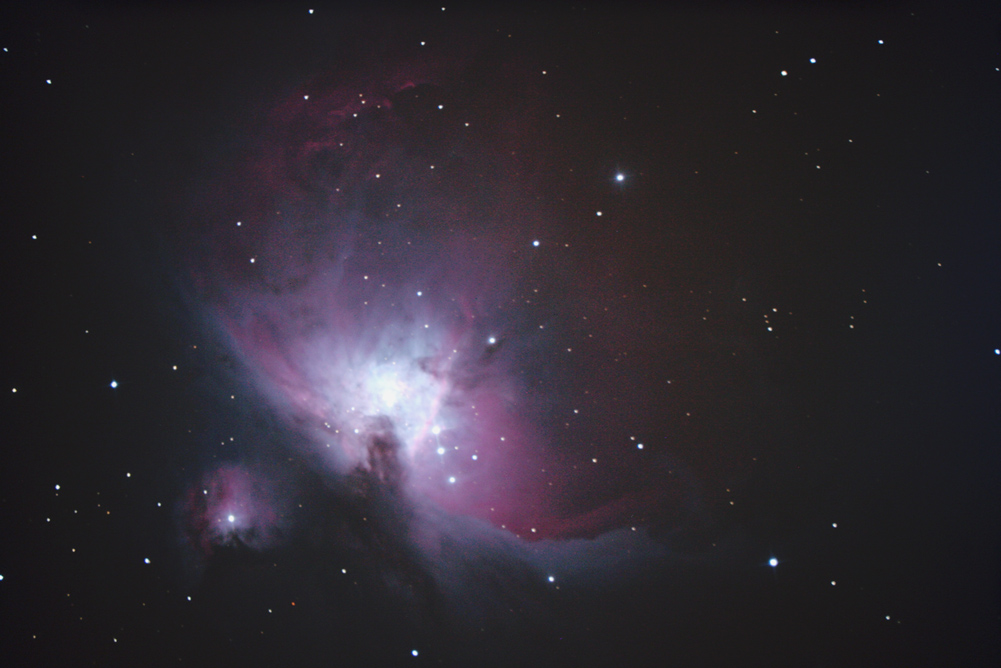
M42 with Vixen VMC260L
¡@
| ¡@ |
 |
¡@ |
| Date | : | 27 Dec 06 |
| Optical system | : | Vixen VMC260L + original 0.60x reducer + unmodd Canon EOS 350D body |
| Effective F.L. & F ratio | : | 1800 mm @ F7 |
| Mount | : | Vixen old version ATLUX non-goto equatorial mount |
| Camera setting | : | Jpeg format @ iso800 w/ NR on |
| Total exposure | : | 4 x 150s = 600 s |
| Guiding | : | Manually guided with Borg 76ED |
| Stacking & processing | : | Stacking in Registax 3.0, Level & Curve stretching in Photoshop 7.0. |
| Sky & Air conditions | : | T = 5-6/10 @ temp ~ 14 oC, R.H. ~ 98% |
| Place of photographing | : | PTC coach carpark in Sai Kung, Hong Kong |
|
Remark |
: |
A test shot to see how much detail could be captured under a light polluted sky at very long focal length w/o any LPS filter |
Comments after test :
That was the 2nd light from this scope after collimation. The collimation was improved but still not perfect.
When being shot, M42 had moved in the very severely light polluted region in the low western sky. So, didn't give too much expectation on the final quality. Just wanted to get any information as mentioned in "Remark" above.
A very big image scale offered by this VMC. It should be best working on imaging globular clusters, PNs, arc minute sized galaxies, ..., etc. It is also good at revealing the core details of those large deep sky objects of degree sized, after good collimation.
However, a good quality autoguider is necessary for this big VMC.
| Star Field Gallery | Deep Sky Gallery | Webcam Planetary | Lunar Gallery | Comet Gallery |
| Newest from Vixen | Vixen Telescope | Tat's Machining | Tat's Specials | For Sale Corner |
© All images are copyright William L.T. Ng.